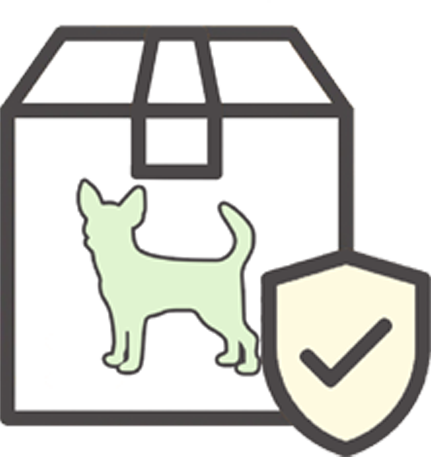A Beginner's Guide to Crate Training Your Dog
Wednesday, September 21, 2016 06:05:34 PM America/Los_Angeles
Crate training may be one of the most important aspects of dog training, but not everyone sees it that way. Some people feel that keeping a dog in a crate is cruel, but that is far from the truth. When done right, crate training your puppy will relieve a huge amount of stress for both you and your dog.
 Source: c.shots/Shutterstock
Source: c.shots/Shutterstock
Crate Training and Housebreaking
The simplest way to housetrain your dog is by using a crate training plan. Using a crate will not only make housebreaking easier, but you'll be teaching your dog two useful skills at once. It's also one of the methods we recommend in conjunction with training your puppy to use a DoggieLawn.
Crates For Safety
Even if you are the most attentive pet parent in the world, you can't keep an eye on your dog every minute of the day. A crate is the perfect solution when you need to spend time away from your dog. Many household items - plants, household cleaners, electrical wires and cords - are dangers that dogs and puppies easily run into. With a crate, you can be reassured that your dog won't be getting into any trouble while your gone.
Crates and Your Dog
Crates definitely make your life easier, but what about your dog? Many people are concerned that their dog will feel bored or trapped in a crate, but this isn't the truth. A crate is simply a 'den' for your dog. Dogs feel more secure in small spaces than they do in large ones, and if they are crate trained correctly, they will soon associate the crate with comfort and security.
A crate is a great tool that makes life easier for you and your dog, but it's important to use it correctly. Here are some important tips to keep in mind while crate training your dog before you teach them to use their dog potty grass:
- Make sure that the crate is the right size. You don't want to use a crate that is too small, but a crate does not have to be very big for your dog to be comfortable. A crate is the right size if your dog can stand up, stretch out, and turn around easily. Don't use a large crate for a puppy or small dog. Not only will your dog feel safer in a smaller crate, but a smaller crate will be better for potty-training. Dogs don't like to go to the bathroom in the same place that they sleep, which is why the crate is so helpful when housebreaking. However, if the crate is too big, your dog will simply use one side as a bed and the other as a bathroom.
- Make the crate a happy place. The crate is a lot like a bedroom for your dog. It should be a comfortable, clean place where your dog can relax. For that reason, do not put your DoggieLawn inside the crate (You wouldn't want your toilet in the bed!).
- Never use the crate as punishment. Like the previous rule, the crate should be a place your dog or puppy wants to be. Don't send your dog to the crate only when you're frustrated or angry with her.
How you begin a crate training plan depends a lot on your dog. If you have an adult dog, you will want to start slowly; the first few introductions to the crate should be very brief, positive experiences. Soon your dog will start associating the crate with happiness, and you will be able to start lengthening the time spent in the crate.
If you are crate training a puppy, you will have to stick to a strict schedule, giving them plenty of time outside of the crate as well as inside of it. Remember, you should never leave your puppy in the crate for longer than they can 'hold it'. The younger your puppy is, the more often they will have to be let out to go to the bathroom. When making a potty-training schedule, keep these tips in mind:
- Waking up: let your puppy outside first thing in the morning
- Mealtime: give your puppy a potty break about 20 minutes after every meal
- Playtime: let your dog out for walks and playtime throughout the day, and always let them potty before going back in the crate for a nap
- Nighttime: puppies will not sleep through the night until they are about 7 months old. Be prepared to let your puppy out as needed throughout the night
Crate training a puppy takes some work and patience, but it definitely pays off in the long run. Both you and your dog will be glad that you took the time to crate train! For even more training advice watch our training video and learn more about our potty training grass mat.


